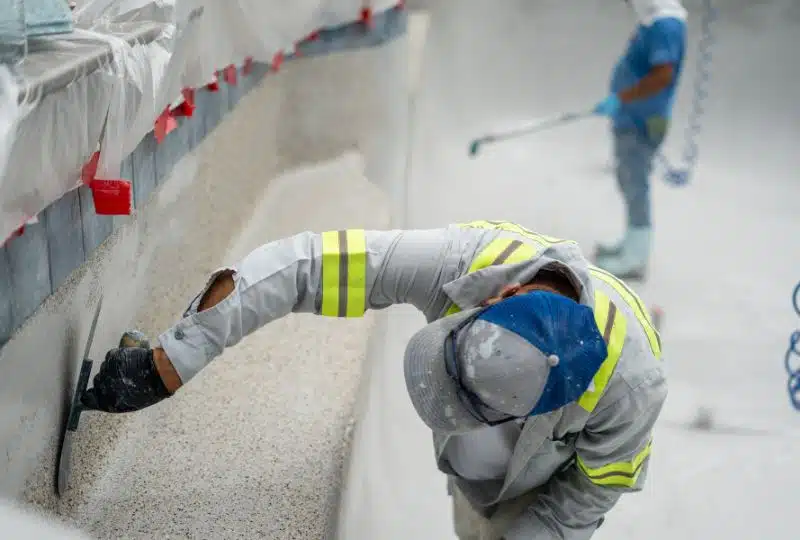
Your swimming pool is supposed to be your own backyard oasis—an escape that lets you beat the heat when summertime rolls around. However, if you find yourself recoiling at the thought of using or even looking at your pool, you wouldn’t be alone.
Even the most well-maintained pools need a little assistance over time, and if you’ve had your pool for a few years, it might be in for some TLC. To help point you in the right direction, let’s take a look at some signs that indicate it’s time to resurface your pool.
The plaster on your pool is a protective layer that shields the underlying surface from exposure to water and the chemicals your pool needs to stay balanced. If plaster begins to flake, peel, or crumble, the only solution is to resurface your pool.
Some people may brush this off as typical wear and tear if it’s near areas like the steps of the pool. However, damaged plaster is never normal, especially if it’s paired with discoloration, which tends to start around the steps.
There are a few types of cracks you need to look out for: check cracks and structural cracks. Check cracks tend to look like spiderwebs, but others describe them as looking like eggshell cracks. Structural cracks typically occur in the pool’s foundation or its supporting structures. These cracks will appear large and deep and often coincide with water level drops.
Replastering will only put a bandage on these problems, so you’ll have to resurface the pool entirely. It isn’t always obvious to homeowners how often they should resurface their pool, and the material of your pool can vastly affect how long it lasts. Be careful of which you choose, and be sure to speak with your contractor.
Not all stains mean you need to resurface your pool, but some do. Light green and brown stains are usually from organic matter like dirt and algae. However, bluish-green stains, dark red and brown stains, or black and purple stains are not normal and mean there are high levels of minerals and metals in the water.
Image Source: unsplash.com
Unfortunately, the only way to remove these stains is to use highly acidic chemicals. However, this may not get rid of the stains entirely, and it may end up eating away at the already vulnerable surface of your pool.
Even if the surface of your pool is gunite, aggregate, pebble, or cement, it should not scratch or hurt you. This is one of the main signs that you need to resurface your pool, as it indicates that your pool’s chemicals have eaten away at the surface.
While this is natural and will occur over time, replastering is a temporary solution, and resurfacing is the only way to make your pool smooth again. Swimming in your pool should never be an uncomfortable experience, but if it is, you’ll need to contact a professional to resurface your pool and make it smooth again.
You spend a lot of time in your home, so it’s important to create a…
If you love a modern house vibe, you can find several easy ways to update…
Are you looking to spruce up your home without breaking the bank? Home improvements don’t…
Florida, also known as the Sunshine State, boasts a vibrant real estate market filled with…
A backyard fireplace is the perfect feature to take any outdoor space up a notch.…
The kitchen, often referred to as the heart of a home, is where both meals…